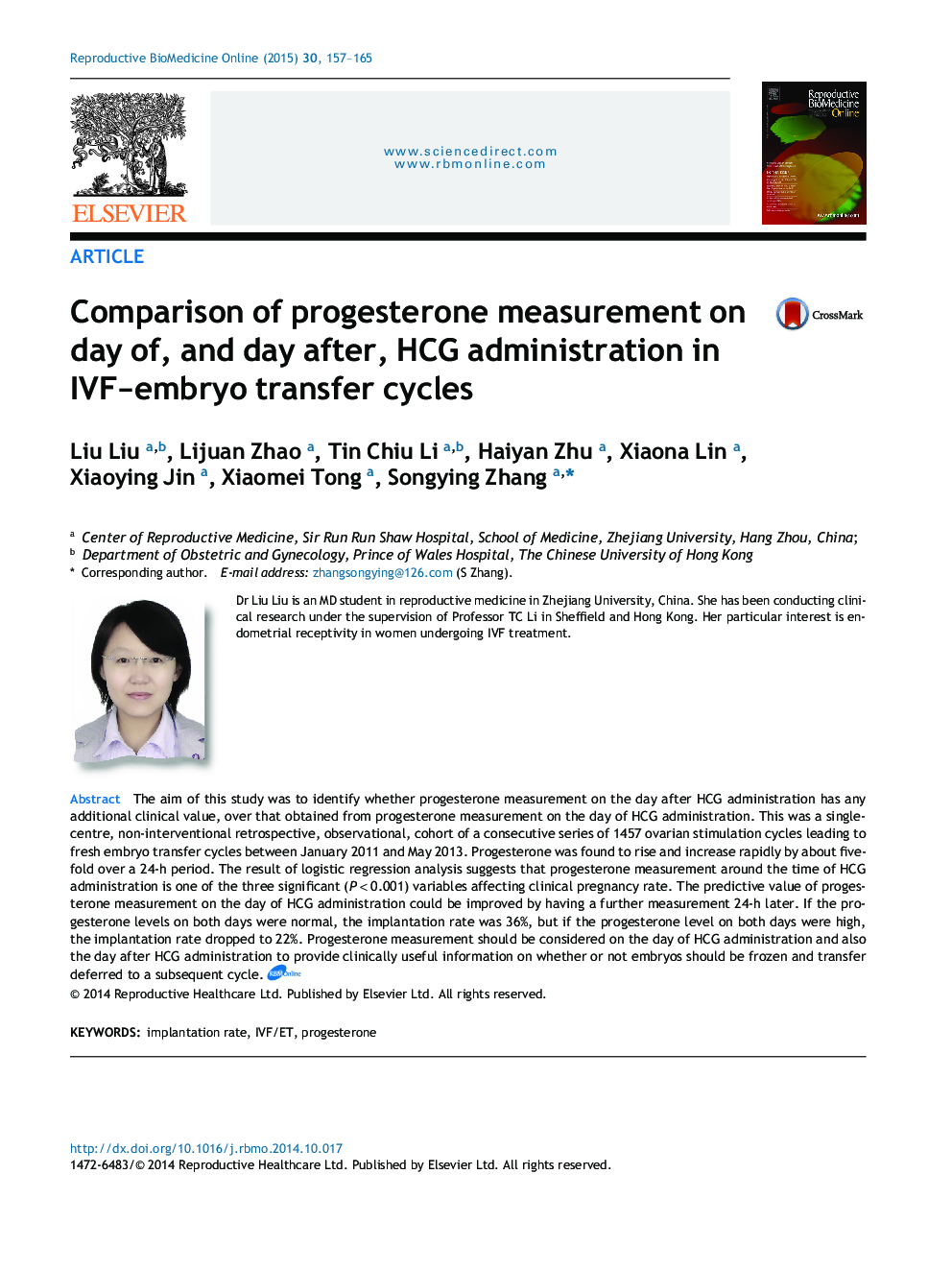| Article ID | Journal | Published Year | Pages | File Type |
|---|---|---|---|---|
| 6188840 | Reproductive BioMedicine Online | 2015 | 9 Pages |
The aim of this study was to identify whether progesterone measurement on the day after HCG administration has any additional clinical value, over that obtained from progesterone measurement on the day of HCG administration. This was a single-centre, non-interventional retrospective, observational, cohort of a consecutive series of 1457 ovarian stimulation cycles leading to fresh embryo transfer cycles between January 2011 and May 2013. Progesterone was found to rise and increase rapidly by about five-fold over a 24-h period. The result of logistic regression analysis suggests that progesterone measurement around the time of HCG administration is one of the three significant (Pâ<0.001) variables affecting clinical pregnancy rate. The predictive value of progesterone measurement on the day of HCG administration could be improved by having a further measurement 24-h later. If the progesterone levels on both days were normal, the implantation rate was 36%, but if the progesterone level on both days were high, the implantation rate dropped to 22%. Progesterone measurement should be considered on the day of HCG administration and also the day after HCG administration to provide clinically useful information on whether or not embryos should be frozen and transfer deferred to a subsequent cycle.
